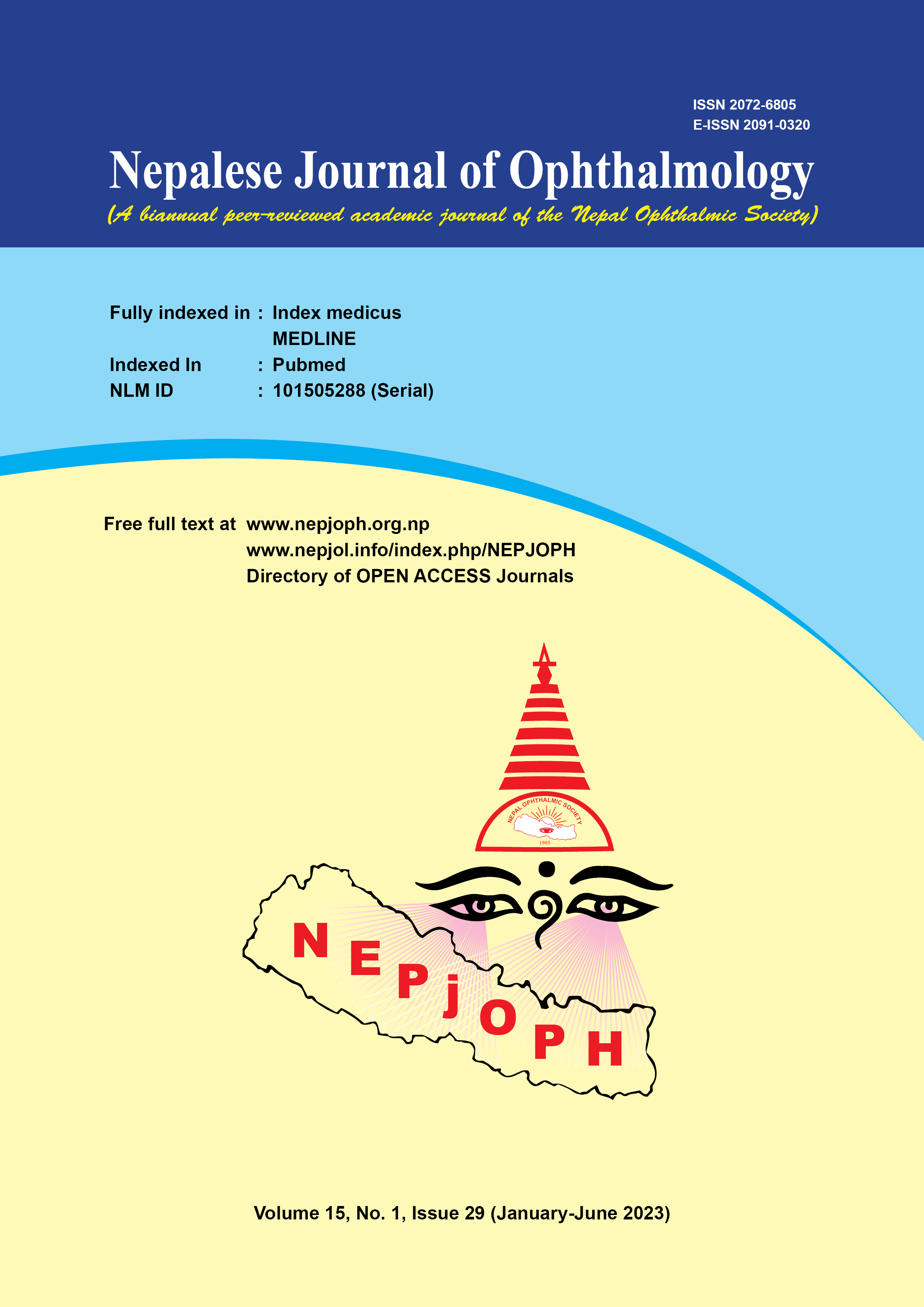Ocular Findings among the Patients of Renal Transplantation
DOI:
https://doi.org/10.3126/nepjoph.v15i1.52446Keywords:
end-stage-renal-disease, non-communicable disease, ocular-morbidityAbstract
Introduction: Renal diseases are on rise globally due to increased incidence of non-communicable diseases as well as primary-kidney diseases and frequent use of nephrotoxic drugs. Only definite treatment of End-Stage-RenalDisease (ESRD) is renal transplantation. Immuno-suppressive-drugs are prescribed lifelong after renal transplantation especially steroids which can lead to various sight-threatening complications.
Methods: This cross sectional, observational study included 62 eyes of 31 patients who had undergone renal transplantation, at least 3 months prior were referred from Nephrology Department. Comprehensive eye evaluation was done at B. P. Koirala Lions Centre for Ophthalmic Studies (BPKLCOS), Department of Ophthalmology, Institute of Medicine.
Results: The average age of participants was 37 ±10.57 years with 77.4 % (n=24) male. Mean duration of renal transplant was 5.10 ± 3.61 years. Fifty-eight percent (n=18) had hypertensive kidney disease. Diabetes Kidney disease, recurrent UTI, CKD of unknown causes and combined case of diabetes plus hypertension were seen in 6.4% (n=2) each. Sixty percent of the patients had some kind of ocular involvement. Twenty-nine percent (n=18) had subnormal visual acuity of ≤ 6/9. Cataract was seen in 29% (n=18) of eyes followed by pinguecula (17.7%, n=11) and hypertensive-retinopathy (17.7%, n=11). Glaucoma and Diabetic-retinopathy were seen only in 6.4% (n= 4) of each eyes. There was no association seen between ocular findings with cause of renal transplant, duration of transplant and renal function status in bivariate analysis.
Conclusions: Some form of ocular abnormality is commonly seen in patients of renal transplantation who are on immunosuppressive drugs. However, incidence of sight threatening complications are rare.
Downloads
Downloads
Published
How to Cite
Issue
Section
License
Copyright (c) 2023 Nepalese Journal of Ophthalmology

This work is licensed under a Creative Commons Attribution-NonCommercial-NoDerivatives 4.0 International License.
This license enables reusers to copy and distribute the material in any medium or format in unadapted form only, for noncommercial purposes only, and only so long as attribution is given to the creator.




